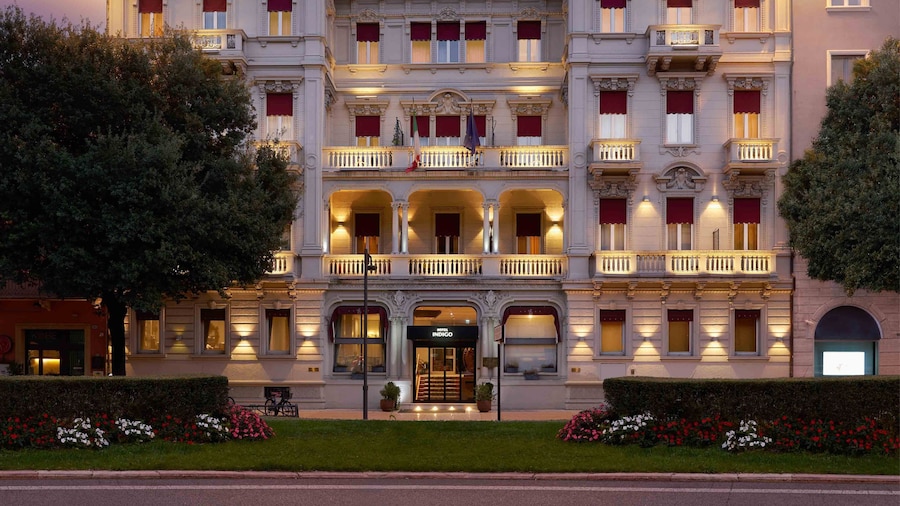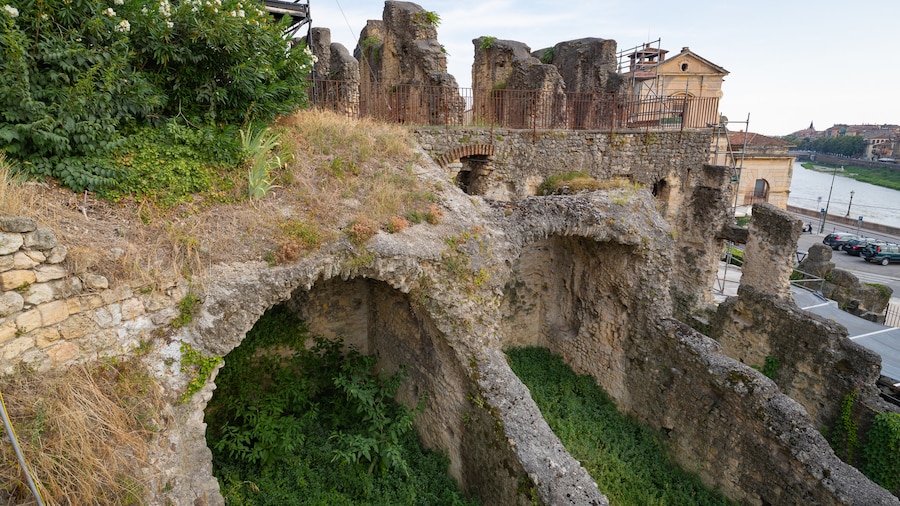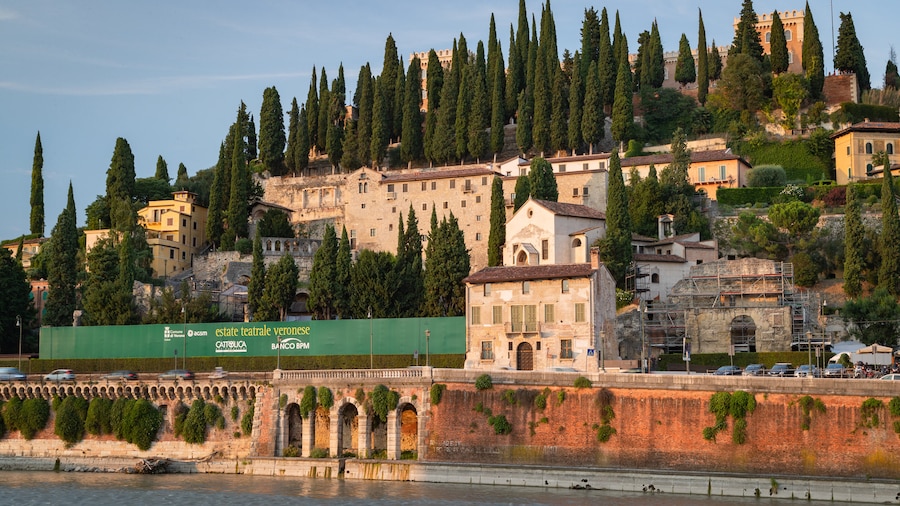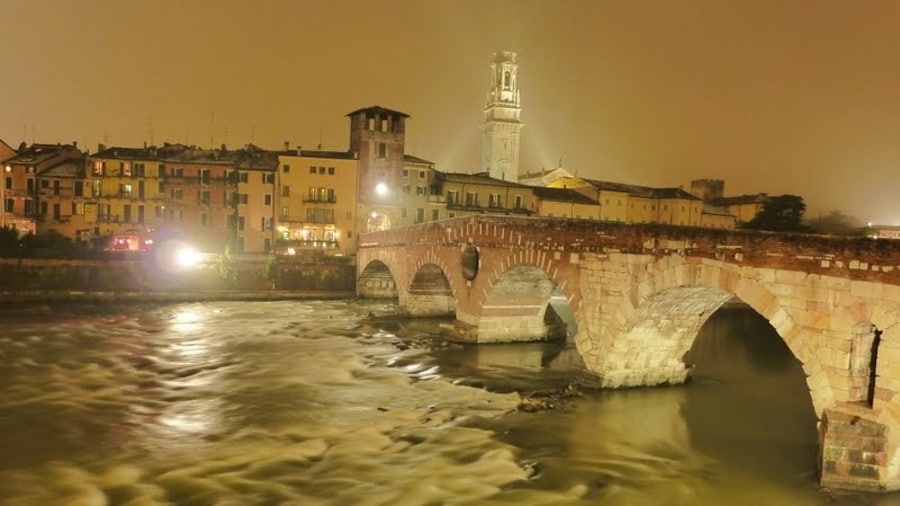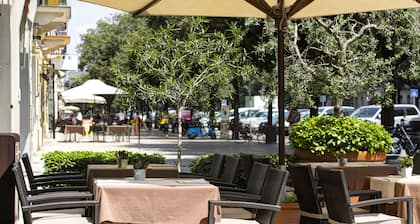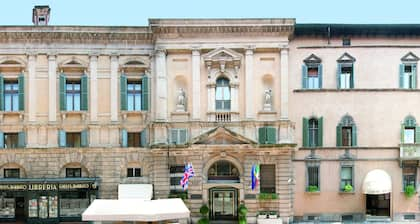Visit the Roman Theater to walk back through time and imagine the events and performances that graced this stage in the Roman era. The theater is a preserved open-air auditorium dating back to the 1st century B.C.
As you make your way around, notice the surviving steps, arcades and loggias. Much of the stage remains intact, while the layouts of the cavea (seating areas), the orchestra and the auditorium remain clear.
Overlooking the Adige River, the semi-circular set of steps and the rectangular platform are protected from flooding by large walls. Climb to the top of the arena for stunning views of the river and the tops of the historic buildings in the Città Antica across the water.
Delve beneath the stage to see the orchestra pit, with its square stone blocks with holes for rope to pull the curtains.
Pick up a brochure for a more extensive understanding of the history of this theater. In addition to the theater’s ruins, the site has a museum displaying all manner of Roman findings.
Excavation began on these ruins in the early 19th century. A temple and a 10th-century church were among the buildings that had been built on top of these ruins and had to be demolished.
There is a fee to access the ruins with discounts for groups, seniors, students and kids. It is open Tuesday through Sunday from morning until evening, and opens in the afternoon on Mondays.
The Roman Theater stands on the northern side of a bend on the Adige River, as it meanders through the center of Verona. Cross the nearby Ponte Pietra and walk east for a few minutes to reach the former theater, or travel by bus to a nearby stop.
While you are here, visit surrounding sights such as the Punto Panoramico Castel S. Pietro, the Castel San Pietro and the Piazza Brà Molinari.






